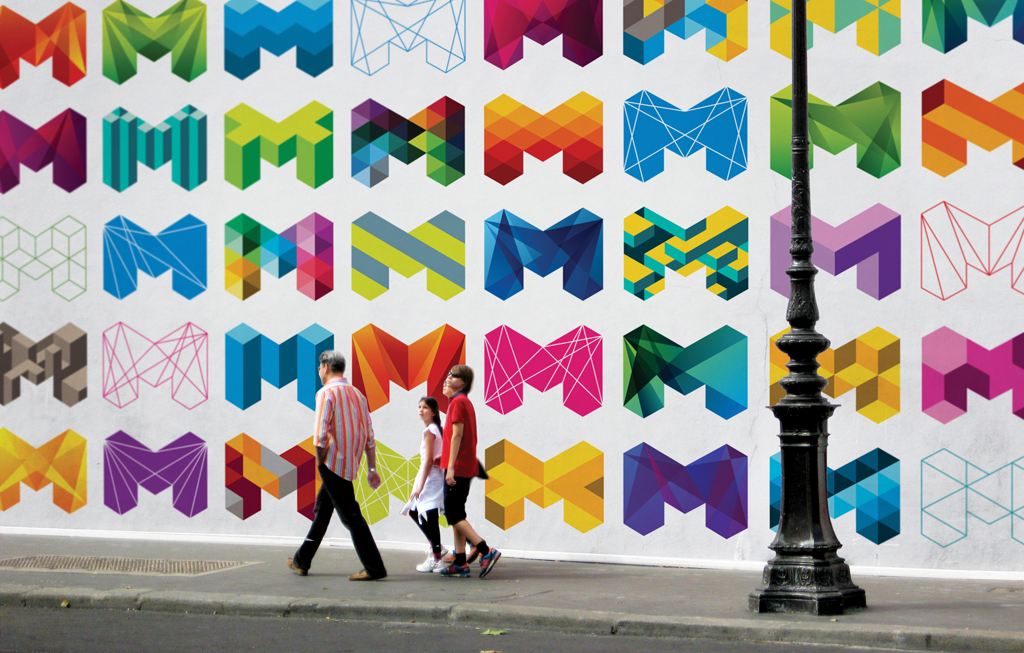
In inimitable style, new Melbourne Lord Mayor, Robert Doyle has set about re-invigorating capial city governance. With a new visual identity, a new economic development agency and a new era for Swanston Street, the pace has been fast.
Delivering a one year report card on 2nd December, the Lord Mayor said he had come ‘determined to establish Council not just as an executive level of government, but as an effective voice to champion Melbourne’. No one could argue, in just 12 months of government, that he has not done just that.
Visual identities, like the architecture of public buildings, will always draw criticism and reverence. The new Melbourne logo and visual identity (see updated website) is a sharp departure from what we have known before. Cr Doyle says the previous logo was made when he listened to Vanilla Ice and MC Hammer. It certainly was looking tired. The new ‘shards of glass’ concept is clearly derived from recent architecture – Federation Square comes to mind. It reflects the city’s intended positioning of ‘sophisticated, design capital’, a claim Melbourne comfortably makes.
Our verdict? Thumbs up. The concept is flexible, unique, modern and accurately reflects the brand Melbourne is building. Having overtaken all other Australian capitals long ago, the new visual identity is playing an important role in maintaining the city’s lead.
Enterprise Melbourne, the city’s new economic development agency, has its own website and some ambitious goals. A single entry point for business and information, it will facilitate investment and support businesses establishing offices in the City of Melbourne. A high-level Enterprise Melbourne advisory board, chaired by Lord Mayor, will set priorities. It is based on successful agencies in other capitals (London, Singapore).
Swanston ‘Walk’, first closed to traffic on March 28, 1982, has never lived up to its re-appellation.
But the new, community backed model has the chance to turn the ‘boulevard of compromise’ into a thoroughfare and meeting place the world admires. In the plan: removal of taxi and vehicle access at all times (except service and delivery vehicles), widened footpaths and separate bicycle lanes divided from traffic (the passing of Carolyn Rawlins and Amy Gillett still fresh in our minds). It wasn’t the Lord Mayor’s election promise but that has been no barrier to him supporting what he says may not by his choice, but the best choice.
Safety has been, and continues to be, high on the Lord Mayor’s priorities. The media went well past the point of serving the common interest long ago with its reporting over every inner-city punch up. Unfortunately there are two issues a city faces: actual safety and perceived safety. Melbourne’s crime rates are comparable to other major Australian cities (violent crime is slightly up). However, negative press is having a major effect on local economies, tourism and quality of life for city residents. Policy responses have not always been properly considered.
The Lord Mayor has run hard on safety. His strategy: to get all the ideas on the table, applying the most effective and practical. As a result, the city is investing $3.5 million on new safe city taxi ranks, CCTV cameras – on streets and patrol vehicles – and licensed venue training. Perhaps most important has been the advocacy to state government, Victoria Police and, importantly, families. A ‘no tolerance’ approach has a draconian ring to it but, many would argue that, unless you come out strong, change will simply not occur.
We want a 24 hour city, but we want it in peace. The Lord Mayor has an admirable ambition for normalisation of behaviour day and night; an end to the perception, and sometimes reality, of wolves running the streets after dark. If you’ve been to Zurich or Vienna you’ll know it’s possible.
So if polls were taken, how would our new Lord Mayor fare? Excluding anyone from Adelaide, you’d have to say he’s probably hitting the right notes for a lot of Melburnians.

